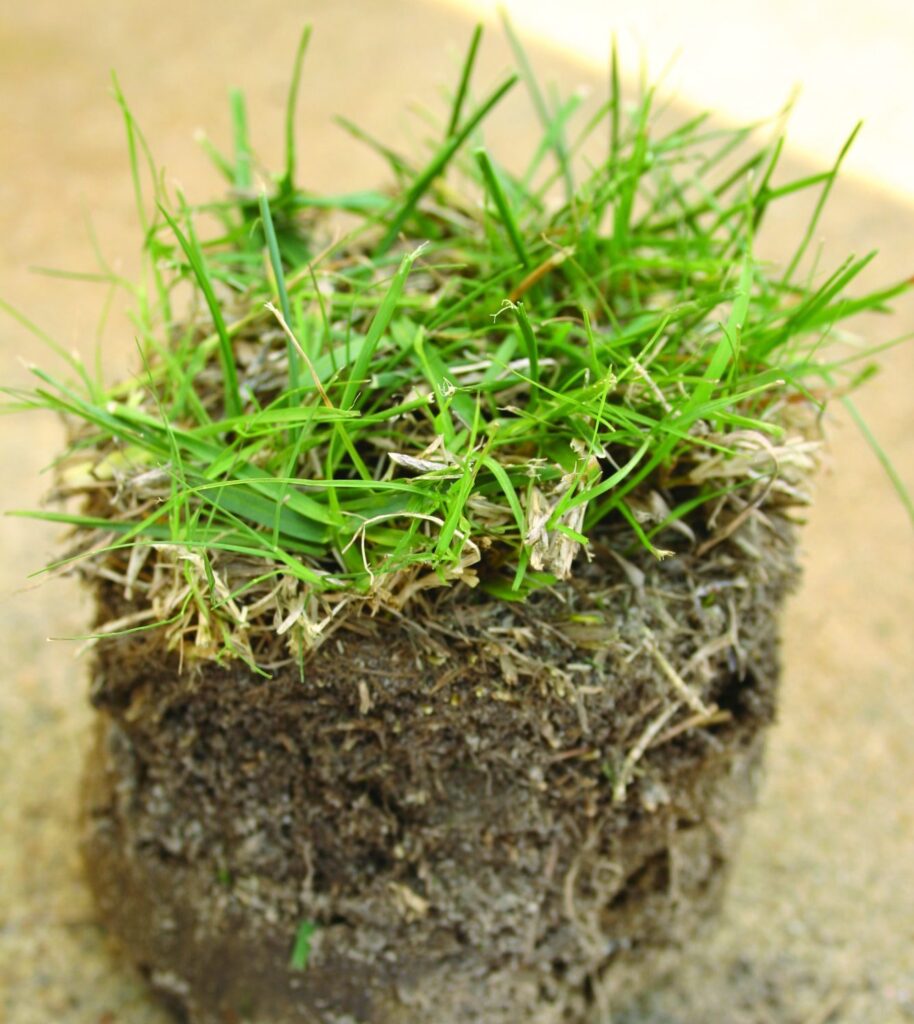
Tall fescue is a widely used cool-season grass known for its bunch-type growth habit and rich, dark green color in spring and fall. It’s best suited for Georgia’s Piedmont region and is commonly planted in home lawns, public areas, and for erosion control. Tall fescue thrives in our local climate, particularly in shaded areas. Its ability to be seeded makes tall fescue especially attractive to DIY homeowners.
I thought I’d discuss fescue in this month’s column because the ideal time to seed tall fescue in Georgia is September through October. Planting earlier may expose the young grass to heat stress and disease, while planting later increases the risk of cold damage. Under the right conditions, seeds germinate within 5 to 10 days and are ready for the first mowing in 3 weeks. Avoid seeding in December or late spring (after April), as these times don’t allow enough root development to survive our hot summers.
Kentucky 31 is the “old” commonly used cultivar of tall fescue, and it still works quite well for many situations. There have been new, more attractive varieties created that are considered “turf-type” fescues with finer leaf blades and lower growth habits.
Successful tall fescue lawn establishment will depend on three main factors: thorough soil preparation, good soil-to-seed contact, and proper irrigation. I think I’d lose my Extension Agent card if I didn’t remind you to run a soil test before preparing your planting bed. Start by clearing any debris, then till the area and incorporate any needed topsoil, organic matter, lime, or fertilizer. Smooth the soil surface before seeding.
Always use certified seed, identifiable by a blue tag, to ensure quality and varietal purity. Most store-bought seed blends contain multiple tall fescue varieties for improved performance. Apply seed at a rate of 5 to 6 pounds per 1,000 square feet. For even coverage and fewer bare spots, divide the seed in half and spread it in two passes—one in each direction at right angles. Lightly rake the seed into the top ¼ inch of soil or use a roller to press it in. Applying a thin layer of straw mulch may help with moisture retention and prevent erosion.
After seeding, keep the top 1 to 2 inches of soil consistently moist—but not saturated. Daily watering of up to ¼ inch is usually needed for the first three weeks to support germination. As seedlings grow, transition to less frequent but deeper watering to encourage root development.
Start mowing when the grass reaches 2 inches in height. Gradually raise the mower height to between 2.5 and 3 inches as the grass matures. During summer, maintaining a 3-inch height is best for heat tolerance in fescue. Do not mow grass when it is wet, especially young seedlings.
Many tall fescue lawns thin out periodically and can benefit from reseeding. The same general concepts apply when reseeding thin areas in your lawn. Be sure to prep the soil, get good contact between the seeds and soil, and keep these areas moist for around 3 weeks. Stand thinning can be avoided by properly managing fertility, mowing height, weeds, disease, and insect pests.
For more tips on turfgrass care in Georgia, visit www.GeorgiaTurf.com. As always, we welcome your calls at our office for additional guidance or troubleshooting.